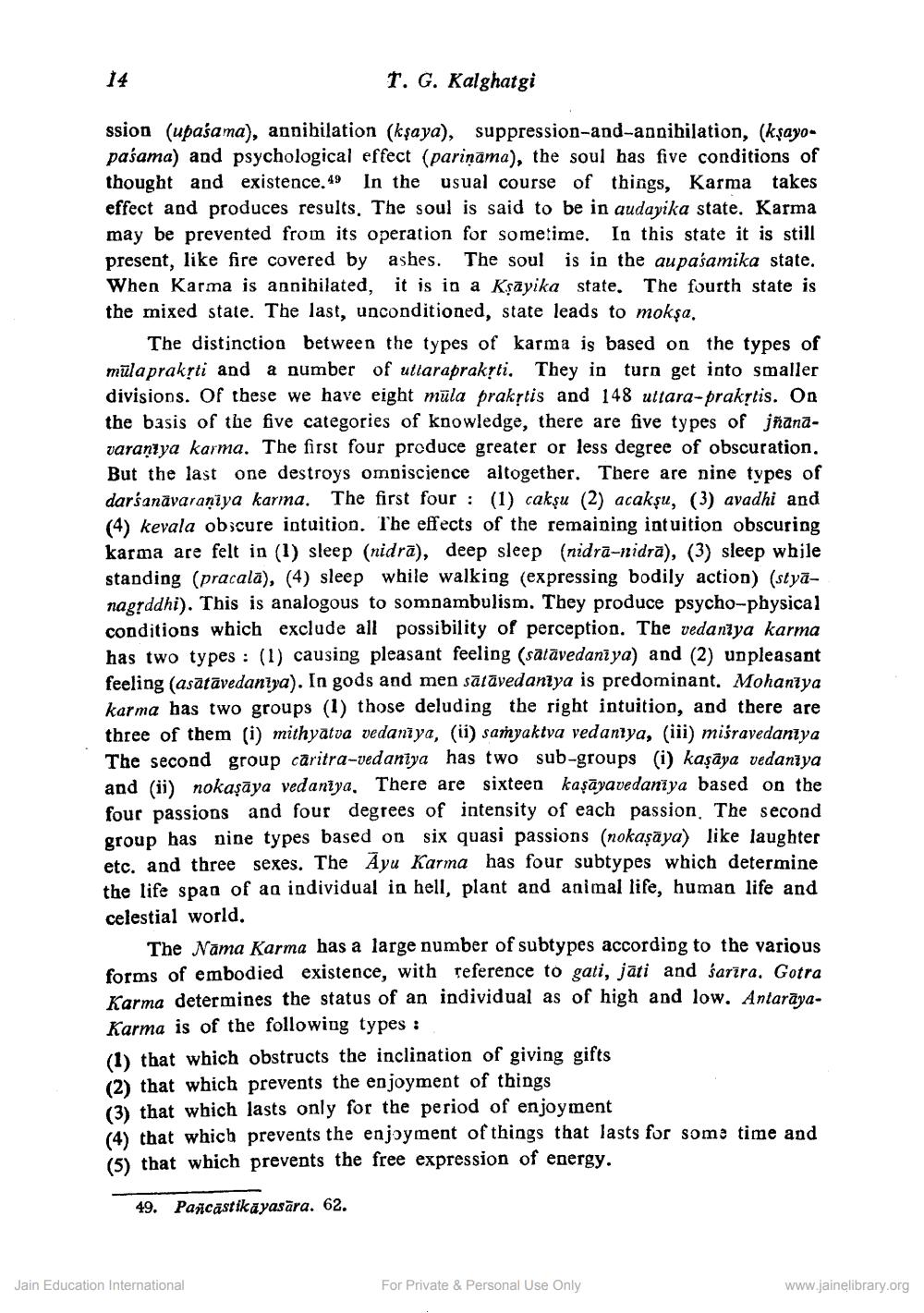________________
14
T. G. Kalghatgi
ssion (upaśama), annihilation (kşaya), suppression-and-annihilation, (kşayopasama) and psychological effect (pariņāma), the soul has five conditions of thought and existence.49 In the usual course of things, Karma takes effect and produces results. The soul is said to be in audayika state. Karma may be prevented from its operation for sometime. In this state it is still present, like fire covered by ashes. The soul is in the aupaśamika state. When Karma is annihilated, it is in a Kşayika state. The fourth state is the mixed state. The last, unconditioned, state leads to mokşa.
The distinction between the types of karma is based on the types of mülapraksti and a number of utiarapraksti. They in turn get into smaller divisions. Of these we have eight müla prakstis and 148 uttara-praktis. On the basis of the five categories of knowledge, there are five types of jñanavaraniya karma. The first four produce greater or less degree of obscuration, But the last one destroys omniscience altogether. There are nine types of darśanavaraniya karma. The first four : (1) cakşu (2) acakṣu, (3) avadhi and (4) kevala obicure intuition. The effects of the remaining intuition obscuring karma are felt in (1) sleep (nidrā), deep sleep (nidra-nidrā), (3) sleep while standing (pracalā), (4) sleep while walking (expressing bodily action) (styānagrddhi). This is analogous to somnambulism. They produce psycho-physical conditions which exclude all possibility of perception. The vedaniya karma has two types : (1) causing pleasant feeling (sātāvedaniya) and (2) unpleasant feeling (asatāvedaniya). In gods and men sātāvedaniya is predominant. Mohaniya karma has two groups (1) those deluding the right intuition, and there are three of them (i) mithyatva vedaniya, (i) samyaktva vedaniya, (iii) mišravedaniya The second group caritra-vedaniya has two sub-groups (i) kaşāya vedaniya and (ii) nokaṣāya vedaniya. There are sixteen kașāyavedaniya based on the four passions and four degrees of intensity of each passion. The second group has nine types based on six quasi passions (nokaṣāya) like laughter etc. and three sexes. The Ayu Karma has four subtypes which determine the life span of an individual in hell, plant and animal life, human life and celestial world.
The Nama Karma has a large number of subtypes according to the various forms of embodied existence, with reference to gati, jāti and sarira. Gotra Karma determines the status of an individual as of high and low, AntarāyaKarma is of the following types : (1) that which obstructs the inclination of giving gifts (2) that which prevents the enjoyment of things (3) that which lasts only for the period of enjoyment (4) that which prevents the enjoyment of things that lasts for some time and (5) that which prevents the free expression of energy.
49. Pancastikayasāra. 62.
Jain Education International
For Private & Personal Use Only
www.jainelibrary.org




